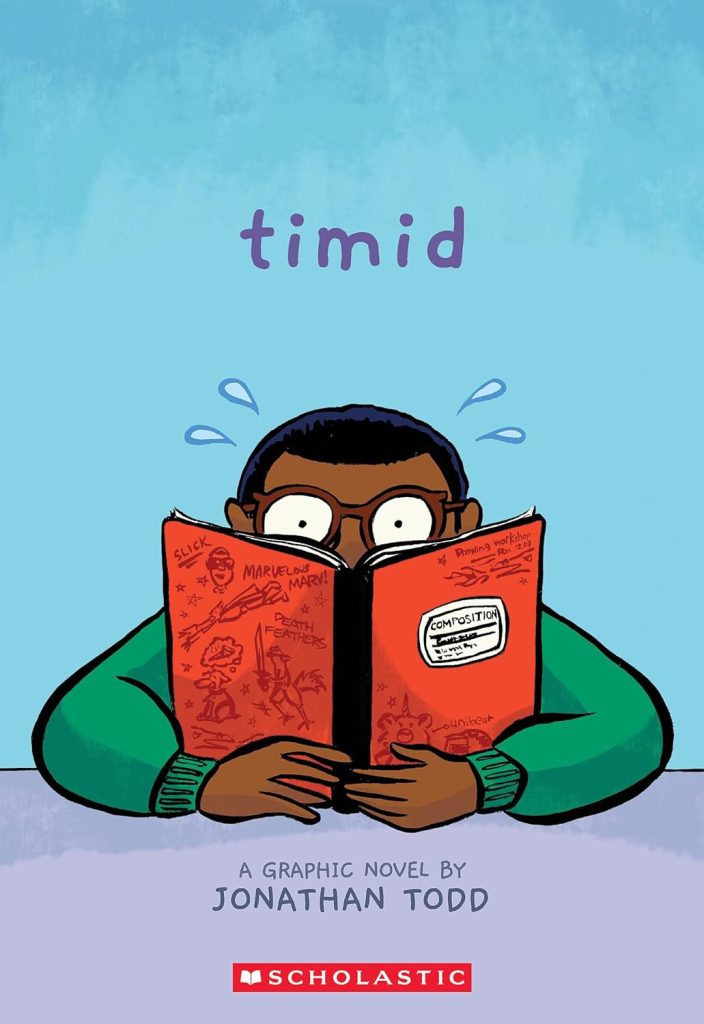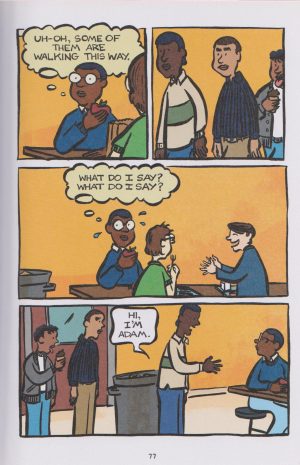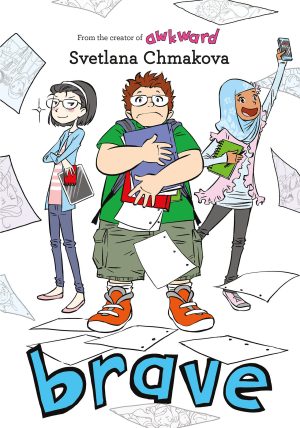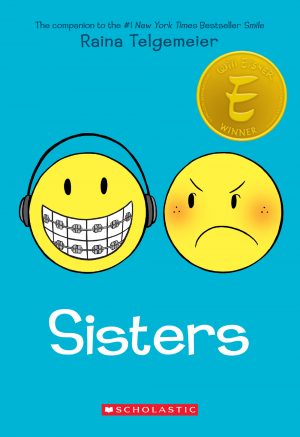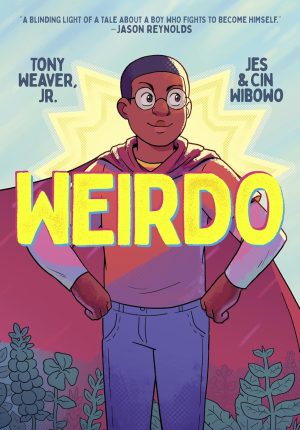Review by Frank Plowright
In his afterword Jonathan Todd notes he’s not exactly Cecil Hall, focus of Timid, but there are distinct similarities as they faced the same difficulties. It adds Timid to the growing list of young adult graphic novels where the authors show how they overcame their problems during adolescence, hoping to reach out and give their readers greater confidence. See the recommendations for others.
At twelve Cecil dreams of being a cartoonist, and is never without his sketchbook. He’s relatively content, but his life is upended when his father takes a new job and moves the family to Boston. Cecil doesn’t hang out with other Black kids at school, but has enough friends so that’s never been an issue for him, but before the family moves his sister warns Cecil not to be an Oreo.
What’s until then been slow reading opens up two themes differentiating Timid from similar stories. Religion forms a big part of Cecil’s life, and it’s rarely represented in graphic novels, so Timid acknowledging the place it has in so many lives is a step forward. The other matter is even more sensitive, and without precisely knowing the social conventions of American schools offering comment is stepping into a minefield. From the outside, though, his older sister’s idea that Cecil should mix more with Black kids rather than white is a pernicious one. Surely any child should be encouraged to mix with people they feel comfortable with, irrespective of skin colour. The choice is weighted in Timid by the first friend Cecil makes in his new school doing a cruel imitation of the way the Black kids speak. It’s written so that it can be viewed as the callousness of children and snobbishness toward scholarship kids rather than racism.
Todd has a loose and sketchy style of cartooning, defining people not by their expressions, but by posture and accessories, while harkening back to the great old tradition of using lines above the head to emphasise how Cecil feels. Because he’s introspective, he’s shown plotting routes and systems to ease his day, delivered by diagram.
Cecil’s big issue is being socially awkward. He’s not able to start conversations, worrying too much about reactions, but hopes his artistic talent will gradually draw people toward him. His first contact, though, is exploitative, and the back cover gives away the major crisis point, which doesn’t actually occur until deep into the book.
The message of being yourself and not letting others force you into doing things you’d rather not be doing runs constantly in the background, as Cecil’s thoughts define his uncertainties. It produces a story that works, but could have accelerated faster.
